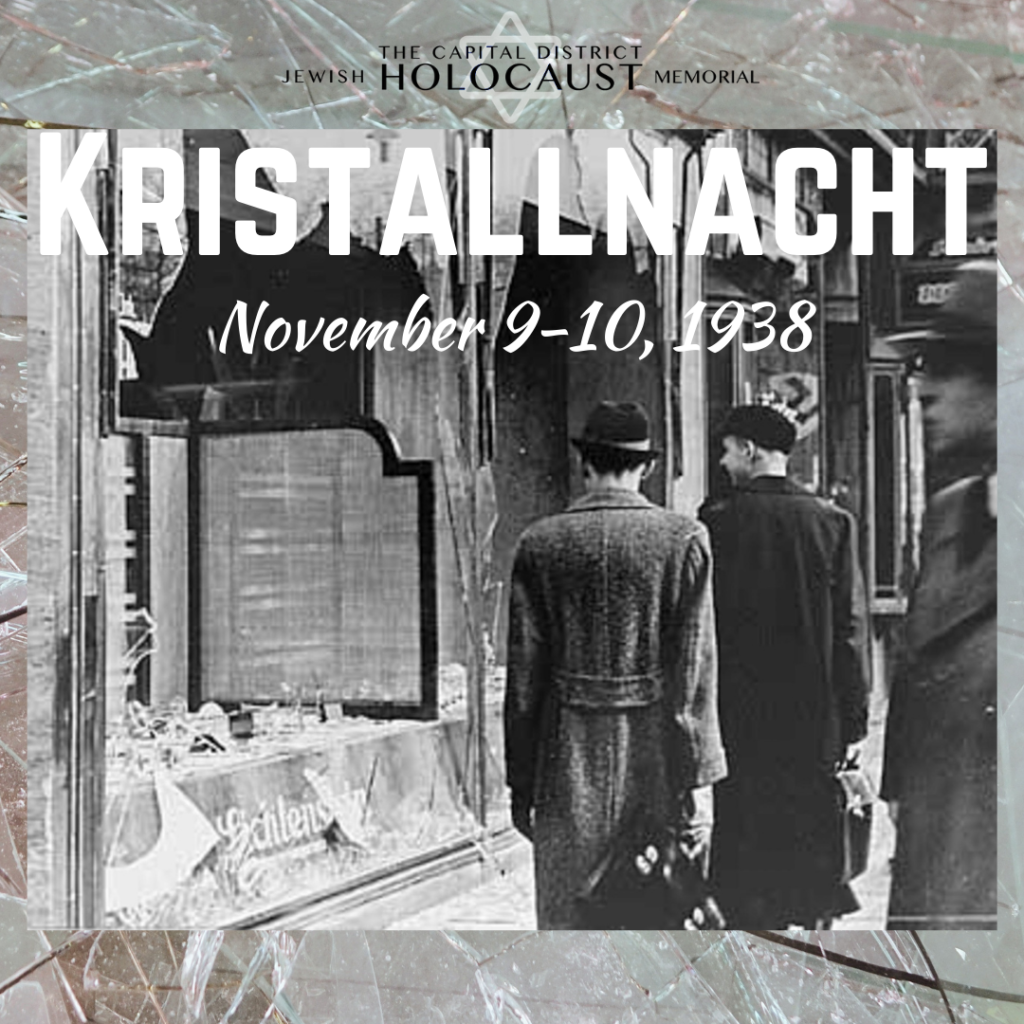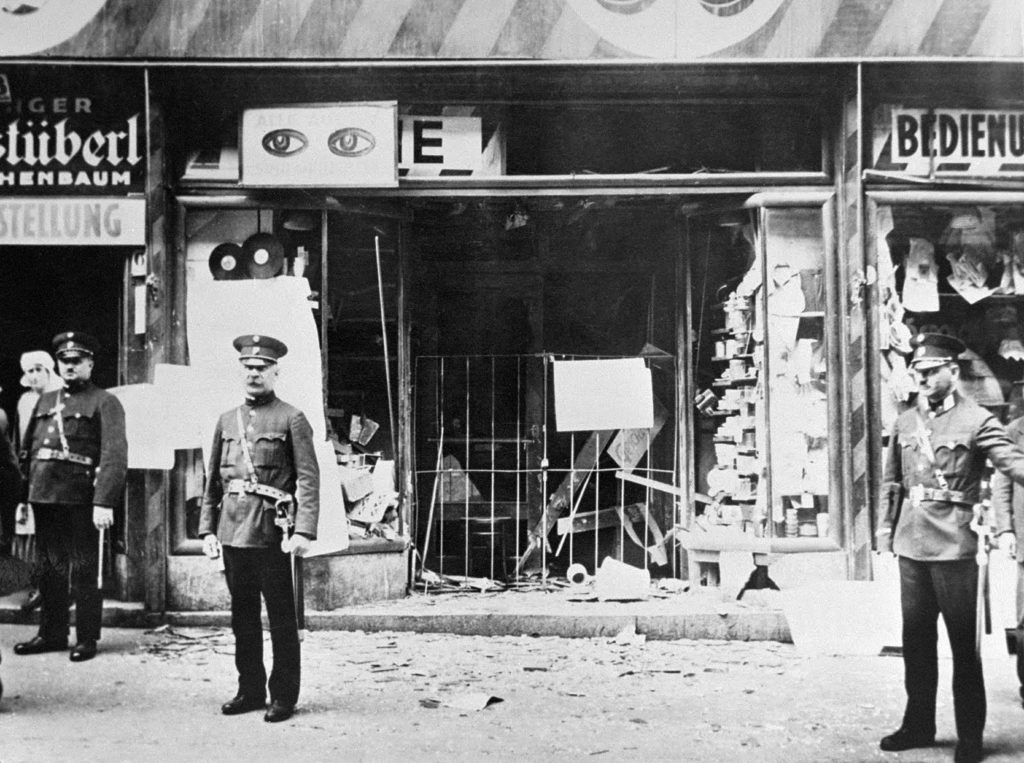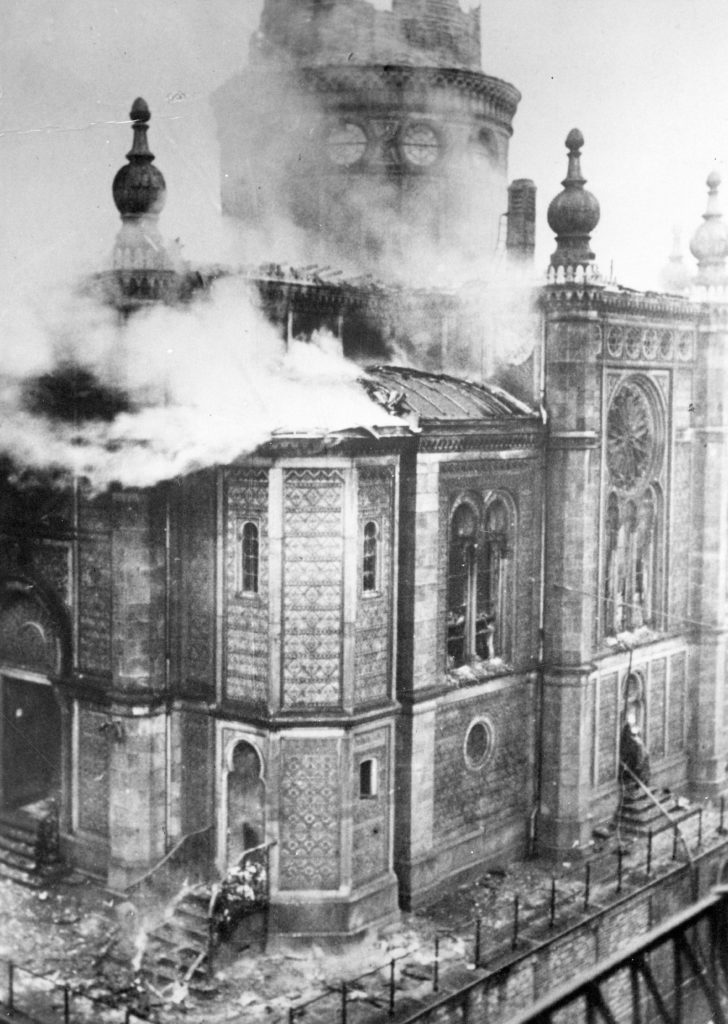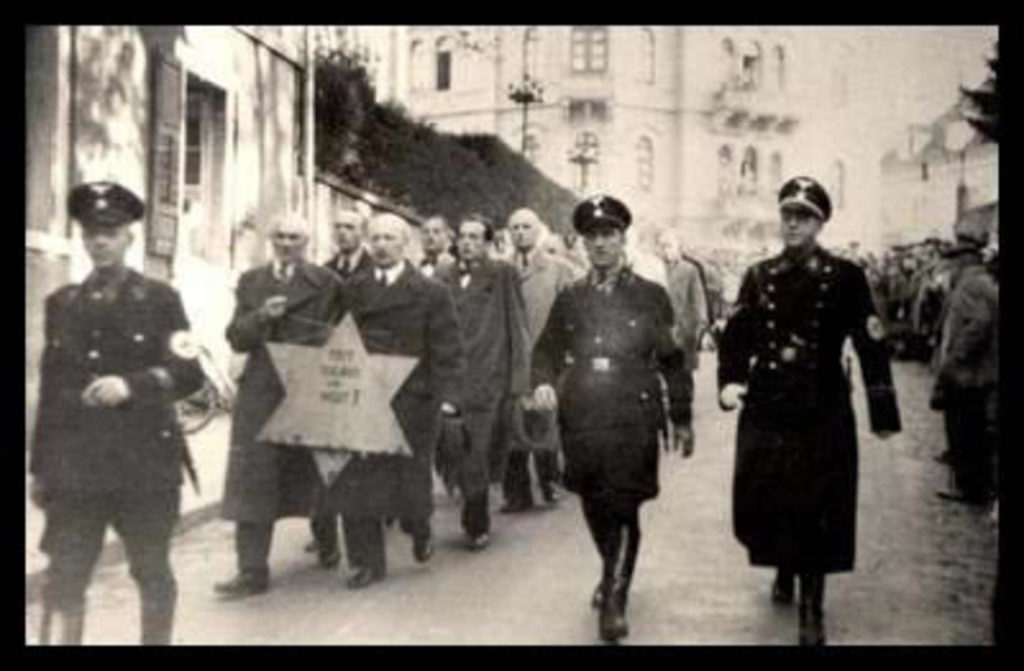
Beginning on November 9, 1938, Nazi officials led a series of pogroms against Jewish communities in Germany and the recently incorporated Nazi territories throughout Europe. Later dubbed Kristallnacht (“Crystal Night” or “Night of Broken Glass” in English), these two days represent a turning point in the events leading up to the Holocaust. The events leading up to and surrounding Kristallnacht leave a legacy of hatred, brutality, and bigotry that would define the Holocaust and reflect in the events of other historical acts of violence, genocide, and injustice.
The term “pogrom” is a Russian word that means “wreak havoc or demolish violently.” Historically, pogroms are attacks against Jewish communities by anti-Jewish factions in Europe and Russia throughout history. According to the United States Holocaust Memorial Museum (USHMM), the first of such attacks did not occur during the rise of the Nazis but many years earlier in Odesa, Ukraine, in 1821. Other pogroms have occurred throughout history, carried out in riots and terrorist attacks against the Jewish community.
Pogroms are often highly organized and sometimes even involve local government and law enforcement support. In the case of Kristallnacht, the Nazis used overwhelming support from local communities to justify violence by manipulating facts to imply that the Jews were responsible for the pogroms during World War II. Kristallnacht, in particular, was attributed to the assassination of German foreign official Ernst vom Rath by Herschel Grynszpan. Grynszpan was troubled about the deportation of his family. This story would perpetuate as justification for the atrocities of Kristallnacht, despite the nuances of the situation. According to the Smithsonian Magazine, Grynszpan was a Polish refugee living in Paris amid poverty and growing anti-Semitism throughout Europe. Frustrated by his family’s deportation and the abuse they’d suffered since moving to Paris, Grynszpan entered the German Embassy in Paris and shot vom Rath. However, he did not know his name. Upon arrest by French police, however, Grynszpan submitted freely, stating that his actions were inspired by the abuse suffered by European Jews at the hands of the Nazis.
Because German society was already heavily antisemitic, Hitler and Minister of Propaganda Joseph Goebbels, seized on this one event. They convinced the citizenry of the Nazi territories that this act was proof that the Jews would stop at nothing to destroy Aryan Germans. Furthermore, violence against Jewish communities throughout Europe was the only response. What’s more, Jews were responsible for the coming pogrom. As a group, Jews were seen as violent, opportunistic, and power-hungry and therefore accountable for any violence perpetrated against them. Though Goebbels insisted that the attacks should not appear to be instigated or organized by the Nazi party, regional Party leaders set down orders to attack the Jewish community. The violence began on the night of November 9 to stop the spread of “World Jewry.”
Every dollar donated will help us continue to educate our community about the Holocaust.

The rioters were given three essential directives: first, they were to ensure that no non-Jewish German life was endangered; second, all archives housed in community synagogues should be confiscated and turned over to the Security Service before the buildings were destroyed; and, third, that they should arrest as many Jews as the local jails could hold, preferably young, able-bodied men.
Hundreds of synagogues, Jewish institutions, and businesses were destroyed and left to burn throughout the night. Jewish cemeteries were also targeted and desecrated with no intervention from law enforcement. By the end of the night, rioters had destroyed hundreds of Jewish institutions, 30,000 Jewish males were incarcerated for their ethnicity, and hundreds of Jews had lost their lives.
Shortly thereafter, the Jews that had been incarcerated in local prisons during Kristallnacht were transferred to Dachau, Buchenwald, Sachsenhausen, and other concentration camps. Jewish identity was officially a crime.

The events of November 9-10, 1938, represent the desire of the Nazis to destroy Jewish identity. As Hitler and the Nazi Party occupied Europe, simply being Jewish and surviving became illegal. Jews everywhere lost their right to identity, their right to provide for themselves and their families, and for many, their right to live and live freely. The United States Holocaust Memorial Museum identifies Kristallnacht as a turning point during the Holocaust. It represented a shift from antisemitic rhetoric toward antisemitic legislation that deprived Jewish communities of their lives and livelihoods. Public cultural displays were also targeted, especially those surrounding important Jewish holidays.

Kristallnacht was not immediately endorsed by every Nazi under Hitler’s regime. In fact, following the riots, many German leaders denounced Kristallnacht, not because it was a violent and immoral display of prejudice, but because it would mean that German insurance companies, not Jewish institutions, would have to pay for the clean-up. To mitigate this unintended consequence, the German government immediately declared that German Jews were responsible for Kristallnacht. The entire community was fined one billion Reichsmark, and their insurance payouts were confiscated to pay for the penalty.
From that moment on, the Nazis enacted law after law that made it a crime to be Jewish. Soon, communities began to “Aryanize.” Jewish businesses and property were turned over to Aryan owners. Jewish workers were barred from employment in the public sector and most privately owned businesses. Jewish children were kicked out of German schools and Jews were no longer allowed to hold driver’s licenses, own cars, or ride public transportation. As their rights were winnowed away, so too were their personhood in the eyes of the German people. This violent bigotry became the justification for imprisonment and extermination.
Please visit these pages for more information:
https://encyclopedia.ushmm.org/content/en/article/pogroms
https://encyclopedia.ushmm.org/content/en/article/kristallnacht
https://www.ushmm.org/collections/bibliography/kristallnacht
© Copyright 2024 CDJHM. All Rights Reserved.